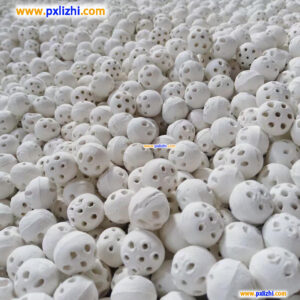Alumina Ceramic Ball Properties and Applications

# Alumina Ceramic Ball Properties and Applications
## Introduction to Alumina Ceramic Balls
Alumina ceramic balls are high-performance ceramic spheres made from aluminum oxide (Al₂O₃). These precision-engineered components have become essential in various industrial applications due to their exceptional mechanical, thermal, and chemical properties. With alumina content typically ranging from 90% to 99.9%, these ceramic balls offer superior performance compared to traditional metal alternatives.
## Key Properties of Alumina Ceramic Balls
### 1. Exceptional Hardness and Wear Resistance
Alumina ceramic balls rank 9 on the Mohs hardness scale, just below diamond. This extreme hardness makes them highly resistant to wear, even under continuous friction and high-load conditions. Their wear resistance is approximately 100 times greater than that of steel, significantly extending service life in abrasive environments.
### 2. Outstanding Thermal Stability
These ceramic balls maintain their structural integrity at temperatures up to 1,600°C (2,912°F). They exhibit minimal thermal expansion and excellent thermal shock resistance, making them ideal for applications involving rapid temperature changes.
### 3. Superior Chemical Inertness
Alumina ceramic balls demonstrate remarkable resistance to most acids, alkalis, and organic solvents. They won’t corrode or degrade when exposed to harsh chemicals, unlike metal alternatives that may oxidize or react.
### 4. Electrical Insulation Properties
With high electrical resistivity (10¹⁴-10¹⁵ Ω·cm), alumina ceramic balls serve as excellent electrical insulators. This property makes them valuable in electronic and electrical applications where conductivity must be avoided.
### 5. Low Density and High Strength
Despite their impressive mechanical strength, alumina ceramic balls have a relatively low density (3.6-3.9 g/cm³), about half that of steel. This combination of lightness and strength reduces energy consumption in rotating applications.
## Common Applications of Alumina Ceramic Balls
### 1. Bearing Systems
Alumina ceramic balls are widely used in precision bearings for high-speed applications, including:
– Machine tool spindles
– Dental handpieces
– Aerospace components
– High-performance automotive systems
Their hardness and smooth surface finish reduce friction and eliminate the need for lubrication in many cases.
### 2. Grinding and Milling Media
In the pharmaceutical, paint, and ceramic industries, alumina balls serve as:
– Grinding media for ball mills
– Dispersion agents
– Size reduction components
Their wear resistance ensures minimal contamination of processed materials.
### 3. Valve Components
The chemical inertness of alumina ceramic balls makes them ideal for:
– Check valves in corrosive fluid systems
– Metering valves in chemical processing
– High-pressure valve seats
### 4. Semiconductor and Electronics Industry
In cleanroom environments, alumina ceramic balls are used for:
– Wafer handling
– Precision positioning
– Electrical insulation components
### 5. Other Specialized Applications
Additional uses include:
– Catalyst supports in chemical reactors
– Ball transfer units for material handling
– Wear-resistant components in mining equipment
– High-temperature furnace components
## Selection Considerations
When choosing alumina ceramic balls for specific applications, consider:
– Alumina content (90%, 95%, 99%, or 99.9%)
Keyword: alumina ceramic ball
– Ball diameter and dimensional tolerances
– Surface finish requirements
– Operating temperature range
– Chemical exposure conditions
– Load and stress factors
Higher alumina content generally provides better performance but at increased cost. For most industrial applications, 95% alumina offers an excellent balance of properties and value.
## Conclusion
Alumina ceramic balls have revolutionized numerous industries by providing durable, high-performance solutions where traditional materials fail. Their unique combination of properties continues to enable technological advancements across multiple sectors. As manufacturing techniques improve, we can expect even broader adoption of these versatile ceramic components in demanding applications.